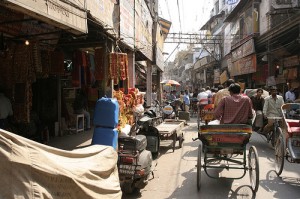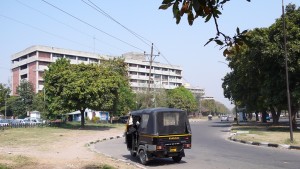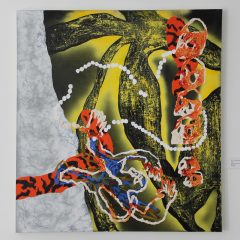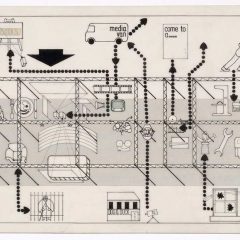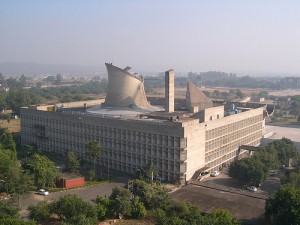
We arrived in Chandigarh two days ago. This means we’ve been traveling officially for 11 days in India- my and my boyfriend’s first time, our friend‘s second time, and we have another 4 weeks ahead of us. I’d been looking forward to seeing Chandigarh, an masterpiece in architectural and urban planning by Le Corbusier, for awhile now, but I can’t really explain how extraordinary it is without first explaining our experience so far in other cities in India.
Our flight was fourteen hours long, and it was eighty-two degrees when we walked out of the airport. We were immediately surrounded by men asking where we were going, grabbing for our bags, pushing us towards three-wheeled motorized cabs. It was dusty, dirty, it smelled like urine. In the car ride to our hotel, we noticed that the lanes on the road seemed to act as suggestions; where there were supposed to be three lanes of traffic, there were five or six, with cars creeping up and slipping in front of each other, inches from bumpers, and no one was honking.
There are cows everywhere in Delhi, and stray dogs. It is unbelievably crowded, like the Times Square subway at rush hour all the time. It smells like urine because there are dozens of walk-up urinals for men (you spot men standing in that unmistakable position often from a distance). The roads that aren’t made for high-speed traffic are dirt, many of which are very uneven, so they are very dusty and narrow, and cars and motor scooters are rolling down them, honking at you to get out of the way as you trip to avoid the dollops of cow droppings. Every few minutes a man spots you as a westerner, comes up and latches onto you, asking where you’re going, if you need a hotel, if you want to buy something, if you need a taxi, but his intention is to make money off of you. You’ll have the best food and tea (chai- for about ten cents) you’ll ever consume from a stall on the street while scooters belch exhaust in your face.
The average Delhi street
It wasn’t until we got to Chandigarh (in Punjab state) that we felt 1) we had gotten off the “beaten path” because we saw only two other Westerners there, and 2) overcome both jet lag and round one of “traveler’s illness” and a 24-hour flu. I had also been bit by a dog, which didn’t break the skin but left a magnificent lump on my wrist.
Most Indian-Americans are from Punjab, so its type of food and music is best-known to Americans. It is the richest state in India, and Chandigarh has the highest per capita income in the country (99,262 rupees, or 1,985 USD). The average in the united states is 20,000 USD). Chandigarh also has the highest literacy rate in India, 89.1.%; the rest of the country is 64.8%). It has one of the lowest crime rates in India, and a large number of IT companies such as Dell, Quark, and Infosys have opened offices in the city.
Typical Chandigarh Street


